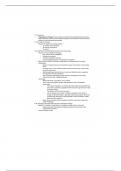Class notes
MGMT 310 Chapter 11 Notes
- Course
- MGMT 310
- Institution
- Virginia Commonwealth University
This is a comprehensive and detailed note on Chapter 11; organizational change for Mgmt 310. *Essential Study material!! *For you, at a price that's fair enough!!
[Show more]




